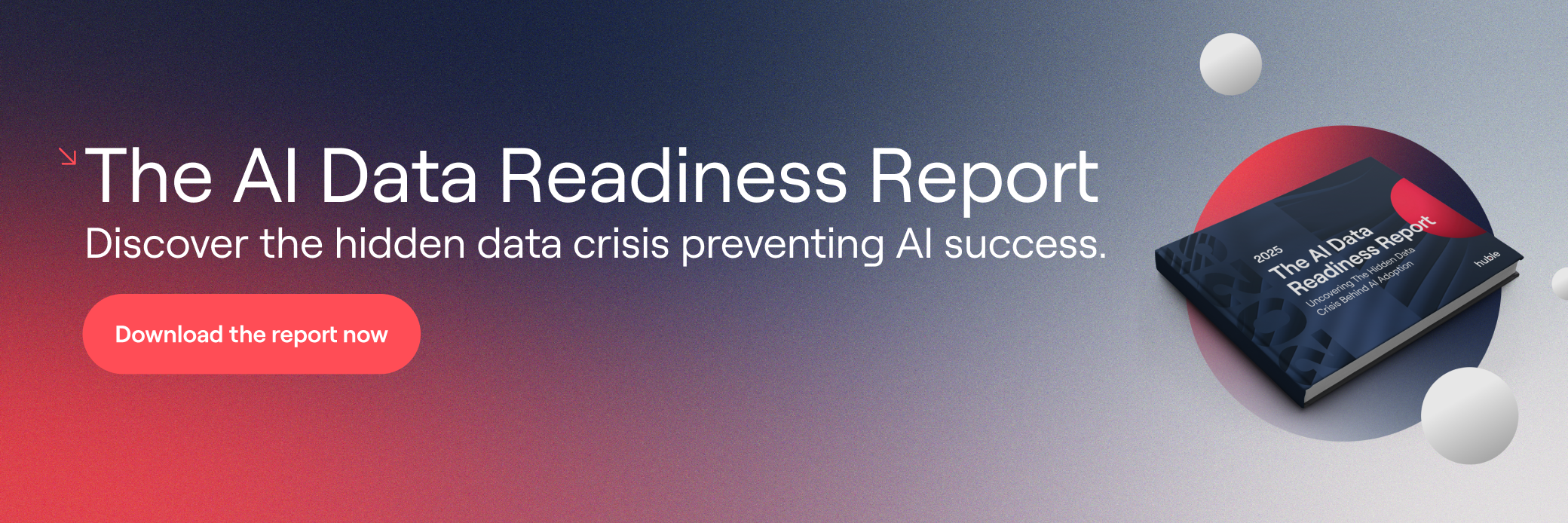Learn how we can help you unify your tools, clean your data, and build an AI strategy that drives real results.
Last week, I had the pleasure of hosting a live webinar with two of the sharpest minds I know — Luke Summerfield from HubSpot and Tanya Littlefield from Amplitude.
We called it “Smarter Together,” but we could’ve just as easily called it “Why Your AI Isn’t Working (Yet).” Watch the recording on demand here.
Because here’s the thing we keep hearing from business leaders: “We’ve invested in AI, but we’re not seeing the value.”
And honestly? I’m not surprised. Because almost every time we dig in with a client or prospect, the issue isn’t the AI itself, it’s the data behind it.
Everyone’s talking about AI. No one’s talking about their data closet.
During the webinar, Tanya used an analogy that stuck with me.
She said most companies have data closets that look like their actual wardrobes, overflowing with stuff they’ve collected over the years, but they only wear the same ten shirts.
"Why do you even have the other 190?” she joked.
It’s funny because it’s true. Businesses are swimming in data: behavioral data, CRM data, web data, campaign data. But only using a tiny portion of it effectively. And usually, it’s not even the right portion.
That’s where the cracks start to show.
AI can’t generate insights from chaos. You can’t personalise a journey when your tools don’t talk to each other. And your teams, marketing, sales, product, all end up working off different versions of the truth.
Why we called it a “hidden” data crisis
What we see at Huble is that most teams think their data is more unified than it really is.
Huble’s AI Data Readiness Report revealed that 55% of business leaders believed they’d unified more than half their data. But over half of those same people also reported poor data quality was limiting their performance.
That’s a dangerous blind spot — one that AI is only going to magnify.
Because AI thrives on context. Without it, it just guesses. And those guesses are what lead to chatbots that don’t help, recommendations that fall flat, and content that misses the mark entirely.
From “sort of personalised” to the “website for one”
Luke said something during the session that I’ve already stolen for our next campaign:
“We’re heading toward a website for one.”
Not “Hi Matt” in the headline. Not industry-specific messaging. An actual dynamically generated site experience that is unique to the person visiting it, based on real behavior and actual need.
That only happens when your systems are connected and your data is trustworthy.
Right now, most companies are stuck somewhere between:
- Structured CRM data in tools like HubSpot (job titles, lead source, lifecycle stages)
- Behavioral data in tools like Amplitude (button clicks, session replays, drop-offs)
- And no real integration in between.
When those worlds are unified, everything changes. Suddenly, you’re not sending generic nurture emails but tailoring outreach based on what someone actually did.
Instead of blindly retargeting you’re guiding someone toward what you know will help them succeed.
AI gets better when your teams are aligned
One of the most valuable parts of the webinar for me was hearing how both Amplitude and HubSpot are applying this internally.
Luke talked about how their team uses product usage data (from Amplitude) and CRM activity (in HubSpot) to create personalised onboarding journeys, including generating dynamic emails using OpenAI that pull in help docs or videos based on the exact features a customer hasn’t used yet.
Tanya’s team does weekly “session replay parties” where product, marketing, and growth sit down together to review where users are getting stuck and then take action.
No ivory tower dashboards. Just direct insight, shared across teams, turned into better campaigns.
That’s the shift we’re seeing: not AI replacing marketers or sellers, but AI enabling teams to act faster — if the data is good, and if it’s shared.
You don’t need perfect data — you need prioritised data
Tanya also made a great point I’ve repeated a few times since: “If you wait for perfect data, you’ll never launch anything.”
And she’s right. The goal isn’t a 100% pristine database. It’s clarity on the 10 or 20 metrics that actually matter and ensuring those are clean, current, and usable.
Too many companies are holding off on AI pilots or personalised journeys because they think they need to fix everything first. But the reality is, the only way to improve is to start using the data and refining as you go.
The real unlock? shared goals and visible wins
To close the webinar, I asked Tanya and Luke about getting internal buy-in.
Because in every company I work with, there’s someone, usually in marketing or data, who wants to unify things… and a bunch of others who haven’t quite seen the light yet.
Luke’s advice was to start with the goal: what are you trying to achieve for the customer? Then work backwards. Show how disjointed data is slowing you down. Start small. Prove impact.
Tanya’s advice was more grassroots: share your wins. If your team builds a brilliant nurture flow based on behavior data, talk about it. If you find a segment that performs better with one message over another, make some noise. Get others to want in.
Because once you show how powerful unified data can be, for marketing, sales, product, and AI, people will stop asking “Why?” and start asking “How?”
Final thought: make the invisible visible
If you’re one of the many businesses investing in AI and still waiting for results, take a step back.
Look at how your tools are connected. Ask whether your teams are sharing the same source of truth. And be honest about whether your data closet needs a clear-out.
Because AI doesn’t work in the dark. It needs clarity. And when you bring your systems together, HubSpot, Amplitude, whatever else you use, you don’t just get better insights. You get a better business.
Reach out to the Huble team today to learn how we can help you unify your tools, clean your data, and build a strategy that drives real results.












-3.png?width=500&height=320&name=Matt%20-%20imagery%20bank%20(8)-3.png)

